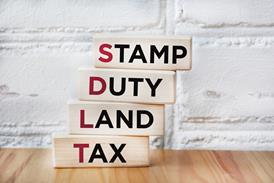Escalating ground rents have been headline news in recent months. They can make a property not only unaffordable, but also potentially unsaleable. Lucy Barber explains how enfranchisement could help, and outlines the legislation
Leasehold enfranchisement has traditionally been a method by which leaseholders can extricate the full value of their properties and make a good return on them by obtaining lease extensions or purchasing their freeholds. It is a quirk in the legislation that if you time your applications right, the sum that you have to pay your landlord for a lease extension or for the freehold is often quite a bit less than the market value of the extended lease or freehold property you end up with. Indeed, there are property investors who seek out short leases with the potential to extend them for the sole purpose of making a return once they have extended the lease. With interest rates remaining low, obtaining finance to fund the cost of enfranchisement is more affordable.
Enfranchisement and ground rents
The issue of escalating ground rents, now so often in the news, presents two more problems which could be solved by leasehold enfranchisement.
The first problem is the cost of escalating rents and the issue they present to homeowners looking to sell. The issue comes when a lease contains an obligation to pay a ground rent to the landlord with rent reviews providing that the ground rent will double every 10 years. For the homeowner, this makes the rent unaffordable very quickly. What’s more, there are now several banks which will not lend on leasehold properties where the lease contains an onerous rent review clause of this nature. This has left these homeowners in a position where the only way they can sell their property (unless they can persuade the landlord to vary the lease) is at a severe discount, to a cash purchaser who can afford the ground rent and does not need a mortgage.
The second, less publicised, problem is the fact that where a lease has a ground rent – either initially or as a result of a rent review – of more than £1,000 per annum in London, or £250 per annum outside London, it may fall within the provisions of the Housing Act 1988 (HA 1988) and become an assured shorthold tenancy (AST) agreement. For example, a London homeowner with a lease that has an initial ground rent of £300 per annum but with a rent review clause which provides that the rent doubles every 10 years would find themselves with a lease which, in 20 years’ time, will become an AST agreement (assuming the tenant was an individual and occupied the property as their main home).
This is a problem because the process by which the landlord is able to terminate tenancy agreements for non-payment of rent by the tenant is a lot easier if the tenancy is an AST under the HA 1988. If the tenant fails to pay the rent due, the landlord can apply to the court for an order for possession of the property. If there are arrears, the court does not have any discretion in issuing a possession order; it is required to do so. Worse still, unless the lease expressly requires the landlord to notify any lenders with an interest in the property of their intention to seek possession of the property before taking such action, then lenders will also be unaware that their security is about to be withdrawn. For both tenants and lenders, this is therefore extremely problematic: banks are unlikely to lend on a lease where the HA 1988 applies.
By contrast, if a long lease doesn’t fall within the provisions of the HA 1988, the method for the landlord to terminate is under the forfeiture process, governed by the Law of Property Act 1925. Where there is a breach of the lease, the court has discretion as to whether or not to allow the landlord to terminate the lease and grant the landlord possession of the property. The courts tend only to grant possession in cases of severe breaches. The tenant also has the ability to claim relief from forfeiture and has time to remedy the breach, and in addition, any lenders with an interest in the property are also required to be notified by the landlord of any proposal to issue forfeiture proceedings before they do so. This method of terminating the lease is therefore a lot less draconian than that under the HA 1988, and gives tenants and lenders better protection.
The enfranchisement process
A number of pieces of legislation enable tenants to enfranchise their properties. I will consider them in turn.
Leasehold Reform Act 1967 (LRA 1967)
This act allows a leasehold owner of a house who has owned the lease for two years to apply to the landlord to purchase the freehold of their house. The house has to first fulfil certain criteria – for example, it has to be self-contained and not overhang any other property. If the house complies with the requirements, the tenant can effectively require the landlord to sell them the freehold at a price that is agreed and negotiated, usually by expert enfranchisement surveyors employed by each party. The act sets out the methods and formalities which the surveyors have to use and apply in calculating the purchase price. Once the tenant owns the freehold of their house, they have the ability to terminate the lease. This process removes entirely any concern of prohibitive escalating ground rents, and the lease becoming an AST agreement.
There are, as has been publicised recently, some landlords which are exempt from falling within the provisions of the act, including the National Trust.
Leasehold Reform, Housing and Urban Development Act 1993 (as amended) (LRHUDA 1993)
This piece of legislation was brought in to widen the class of tenants that could enfranchise their properties. There are two parts to this act. The first part deals with collective enfranchisement, and the second with lease extensions.
The collective enfranchisement process under this act allows tenants in a block of flats to get together and require the landlord to sell them the freehold of their building. The building has first to fulfil certain criteria, including the following.
- It has to be self-contained.
- It must contain two or more flats, two-thirds of which have are owned by qualifying tenants (which, for this purpose, is a tenant who owns a lease that was originally granted for a term of more than 21 years).
- Any commercial element of the building must not take up more than 25 per cent of the total floor area of the building (excluding common parts).
- If the building qualifies, it is open to the tenants to purchase the freehold from their landlord by way of what effectively is a compulsory purchase.
At least 50 per cent of the tenants in the building have to join together to make the application to the landlord to purchase the freehold of the building. A specialist enfranchisement surveyor will usually be employed to advise on the likely price that will be payable, and also to negotiate the purchase price with the landlord’s surveyor. While this form of enfranchisement does tend to be a fairly lengthy process, the tenants can, once they own the freehold, realise their investment by granting themselves 999-year leases with a ground rent of a peppercorn (or on whatever terms they choose). As this is the consequence, it is no surprise that part of the calculation for the purchase price is the capitalisation of the ground rents payable by the tenants to the landlord in their leases, to compensate the landlord for the loss of this income. However, this must be weighed up against the longer-term benefit if the tenants have a prohibitive ground rent escalation clause in their lease, or a lease which at some point might fall within the provisions of the HA 1988: by collectively enfranchising their building, they can remove both of these concerns, as they can achieve a new lease with nil ground rent. As mentioned above, it is not uncommon for tenants to see a return on their investment when they come to sell their lease, because the price they pay for their share of the freehold is usually less than the open market value of the lease they end up with. In addition, a 999-year lease with a nil ground rent and a share in a freehold company is a more marketable asset, given that (save for certain esoteric exceptions) we do not have freehold flats in the UK. Such a property is also more likely to appeal to overseas investors, who may not always understand the nuances of the freehold and leasehold tenure we have in the UK.
Part 2 of the act deals with lease extensions, and gives tenants who have owned their lease of a flat for at least two years the right to obtain a lease extension from their landlord. The extension gives them an additional term of 90 years on their existing lease, and the act also provides that their ground rent should be reduced to a peppercorn. Again, in calculating the price to be paid for the tenant’s lease extension, some of the payment is made up of a sum to compensate the landlord for the loss of the income going forward because of the new lease being granted at a peppercorn rent. However, the tenant once again can achieve the removal of any prohibitive escalating ground rent provisions and ensure the lease will not become an AST, and thereby acquire a more marketable, and therefore more valuable, asset.
The Landlord and Tenant Act 1987
This provides that if the landlord wants to sell a reversionary interest in a residential building, they have to first offer that interest to the residential tenants at the price at which they wish to sell it on the open market. If a landlord fails to observe the provisions of this act and sells the interest without following its provisions, it is a criminal offence. In addition, the tenants have a right of recourse against any buyer of that interest where the provisions of the act were not followed: they have a right to purchase the interest which the buyer acquired, at the price they acquired it, in effect setting aside the ‘unlawful’ transaction.
The building needs to fulfil certain criteria in order to fall within the provisions of the act: these are similar to those in the LRHUDA 1993 (as amended) already mentioned, although there needs to be here only 50 per cent of the floor area used as residential, as opposed to 75 per cent.
If more than 50 per cent of tenants in a building opt to take up the offer of the reversionary interest, this becomes another option for tenants to collectively acquire the freehold of their building. Once they are the freehold owners, they will, as with a collective enfranchisement, be able to grant themselves new leases of their flats, usually for 999 years, at a ground rent of a peppercorn, and again thereby remove the escalating ground rent and HA 1988 problems.
The Commonhold and Leasehold Reform Act 2002
This act amended parts of the LRHUDA 1993 (as amended), and also introduced a new way for tenants to achieve a right to manage their buildings, without paying the landlord a premium for it. The criteria which the building has to fulfil for tenants to be able to make such a claim is as under the 1993 act, and the process by which tenants can do this is comparable to the collective enfranchisement process, save that it is a lot quicker, because there are no discussions over any purchase price as the tenants can make this claim without paying the landlord any money (save for some legal costs). Once the tenants have concluded the process and the management responsibility is passed to them, they have to take over the landlord’s obligations in their leases.
What a right to manage claim does not do, however, is give the tenants control over their building entirely – so, for example, the landlord could still develop the building by constructing another floor or installing phone masts on the roof. More crucially though, it does not give the tenants the right to grant themselves new leases or alter their leases in any way, so if they are tenants who have escalating ground rent leases or leases which fall within the HA 1988, a right to manage claim will not assist them with this issue.
This option therefore really only presents any benefits where the freehold is too expensive for the tenants to purchase (or unavailable for some other reason).
A final thought
Enfranchisement seems to be a possible solution for tenants facing escalating ground rents in their leases and the risk of the tenancy becoming an AST. Given the current relatively low mortgage interest rates, affordable mortgage finance may be available at the moment to fund the cost of making an enfranchisement claim.
Where a property owner has acquired rights under the LRA 1967 or part 2 of the LRHUDA 1993 (as amended) by way of owning the property for a two-year period, these rights can be assigned to buyers, so that a buyer would not have to wait for two years to take advantage of these rights. A buyer may therefore be willing to purchase the property, enfranchise it, and sit out the market slump with a long-term view in mind, so that they will eventually see their return. Enfranchisement will not, of course, be possible in all circumstances, and it may be that the decline in value of some properties with increasing ground rents cannot be overridden by this process, but enfranchisement does perhaps provide a glimmer of hope in relation to these problems.





















